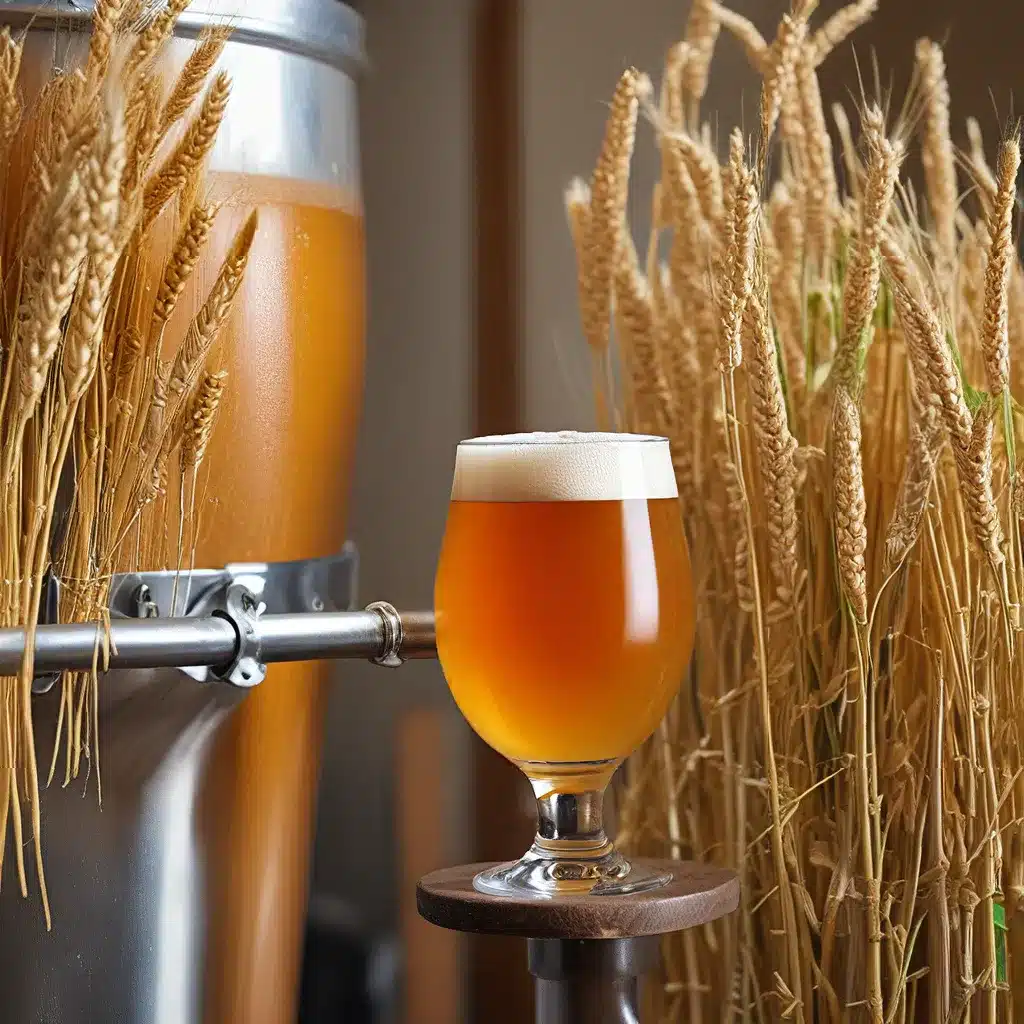
The Wheat Beer Awakening
Ah, the humble wheat beer – a quenching, frothy delight that has captured the hearts and taste buds of beer enthusiasts worldwide. As a homebrewer, I’ve always had a soft spot for these delectable brews, with their silky mouthfeel and captivating aromas. But let me tell you, crafting the perfect wheat beer is no easy feat. It’s a delicate dance between ingredients, technique, and a touch of magic that can elevate a simple beverage into a true work of art.
The Secrets of Wheat Beer Perfection
Now, I know what you’re thinking: “But wait, isn’t wheat beer just a blonde ale with some German ale yeast?” Oh, how I wish it were that simple! You see, my friends, there’s so much more to it than that. Let me share with you the three sacred secrets I’ve uncovered in my quest for wheat beer perfection.
The Water Conundrum
First and foremost, the water. Ah, the unsung hero of any great beer. As I’ve learned from my time in the brew lab, the key to a truly authentic wheat beer lies in the water profile. You see, the water in Cologne, the birthplace of the iconic Kölsch style, is hard – quite the opposite of the soft, filtered stuff most of us have access to. This hardness, particularly the high levels of bicarbonates, is what gives Kölsch its signature snap and crispness.
So, what’s a homebrewer to do? Well, the solution is simple: treat that water! By adding a touch of baking soda, you can mimic the mineral-rich profile of Cologne’s liquid gold. It’s a game-changer, I tell you. Just don’t go overboard – a little goes a long way in achieving that perfect wheat beer balance.
The Malt Masterpiece
Next up, the malt. Now, I know what you’re thinking: “Of course, the malt is essential!” But here’s the twist – it’s not just any old malt that will do. As Corey Blodgett, the Kölsch evangelist, so eloquently puts it, the secret lies in high-quality German pilsner malt. Keep it simple, my friends. No need for fancy additions like Vienna or Munich malt, or even a hefty dose of wheat – that’s just a common misconception.
The true beauty of a wheat beer, be it a Kölsch or any other style, is in its delicate balance. A touch of Carapils can lend a lovely bready aroma and a hint of honey, but anything more than that can throw the whole thing off-kilter. Trust me, you want to let the pilsner malt shine, like the rising sun over the Rhein.
The Mash Mastery
And finally, the mash. Ah, the beating heart of any great beer. As I’ve discovered in my experimentation, a three-step mash is the way to go for wheat beers. You see, the delicate balance of this style requires a hint of sweetness to counteract the high attenuation. A single-infusion mash just won’t cut it, my friends.
Now, I know what you’re thinking: “But I’m a die-hard single-infusion brewer!” And that’s perfectly fine. But trust me, when you start playing around with step mashes, you’ll never go back. Aim for a temperature range of 148-150°F (64-66°C), and let the magic unfold. The result? A wheat beer that will have the good people of Cologne themselves nodding in approval.
The Final Touch: Hops
Ah, the hops. The unsung hero of any great beer. As Corey Blodgett so eloquently states, anyone who tells you that Kölsch isn’t hoppy hasn’t been to Cologne. The same holds true for wheat beers in general.
Now, I know what you’re thinking: “But I thought wheat beers were supposed to be all about the malt and yeast!” Well, my friends, that’s just a common misconception. The truth is, a well-crafted wheat beer needs a touch of hoppiness to balance out the sweetness and create that irresistible harmony.
The key, however, is to use restraint. Stick to German Noble hops or similar varieties, and steer clear of those newer, citrusy or fruity hop varieties. They’ll just overpower the delicate dance between the malt, yeast, and hops. A little late-addition hoppiness can liven things up, but don’t go overboard. After all, we’re not trying to brew an IPA here – we’re crafting the perfect wheat beer.
The Ultimate Secret: The People
But you know what, as I sit here sipping on my latest wheat beer creation, I realized that there’s an even deeper secret to crafting the perfect brew. It’s not just about the water, the malt, the mash, or even the hops. No, the true secret lies in the people.
As Corey Blodgett so beautifully puts it, “It’s not about the Kölsch. It’s about the Kölsch.” And the same holds true for any great beer, including our beloved wheat beers.
You see, it’s not just about what’s in the glass – it’s about the stories, the traditions, and the connections that come with it. When you share a wheat beer with friends, family, or even strangers, you’re not just enjoying a delicious beverage. You’re tapping into a rich tapestry of culture, history, and community that has been woven into the very fabric of this beloved style.
So, as you embark on your own wheat beer brewing journey, remember that the secret to crafting the perfect brew lies not just in the ingredients and techniques, but in the people you share it with. Whether you’re enjoying a refreshing Kölsch in the heart of Cologne or a homemade wheat beer with your closest friends, the true magic happens when you connect over a shared love of this wonderful, versatile style.
Now, if you’ll excuse me, I think it’s time to head over to The Up & Under Pub and see what they have on tap. Cheers, my friends, and happy brewing!

